Heidelberg 1693 is a 2D Action game set in a twisted version of Europe that has been overrun by the undead and hellish creatures. We play as a French musketeer who finds himself right in the thick of it as his city is nearly wiped off the map. Given that event, his lord learns of his bastard son’s survival after attempting to poison him, and we are sent to dispose of this new so-called ‘Moon King”. Promptly riding off to our target’s hideout in Germany, it soon becomes apparent how dangerous this task is as we get closer to the epicenter of evil. Our faithful musketeer, for as skilled as he is, is no superhuman. With a rapier on his hip and a firearm not exactly known for its rate of fire, the path forward will be fought for inch by inch.
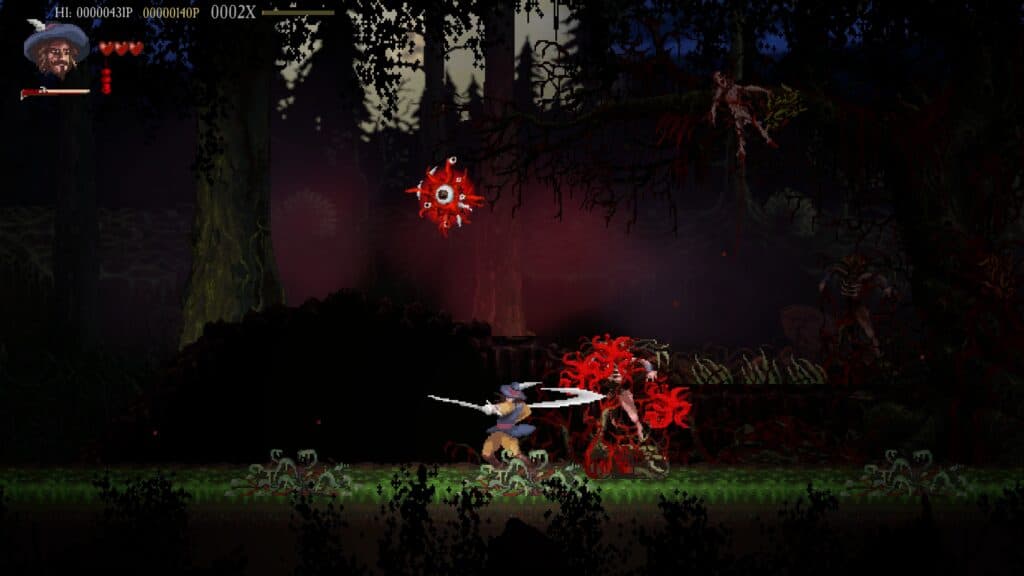
One of the first things you’ll notice is the beautiful sprite work and animations. Those stunning visuals will hold their quality throughout and even improve as you reach the conclusion. It really reminds me of playing Another World for the first time, for those old enough to remember that title. As tempting as it is to take your time and gawk at the environments, you will soon learn there is rarely a moment where you’re not fighting for your life. Heidelberg 1693 has a lot in common with the Shmup genre in that projectiles are usually flying at you from multiple directions. To our Musketeer’s credit, he can double-jump and crouch, yet he isn’t a small target to hit. The most critical skill to learn is using other enemies as cover between other marksmen and yourself. Unlike most other Action games, you are unlikely to get far if you go in wildly slaying everything in sight.
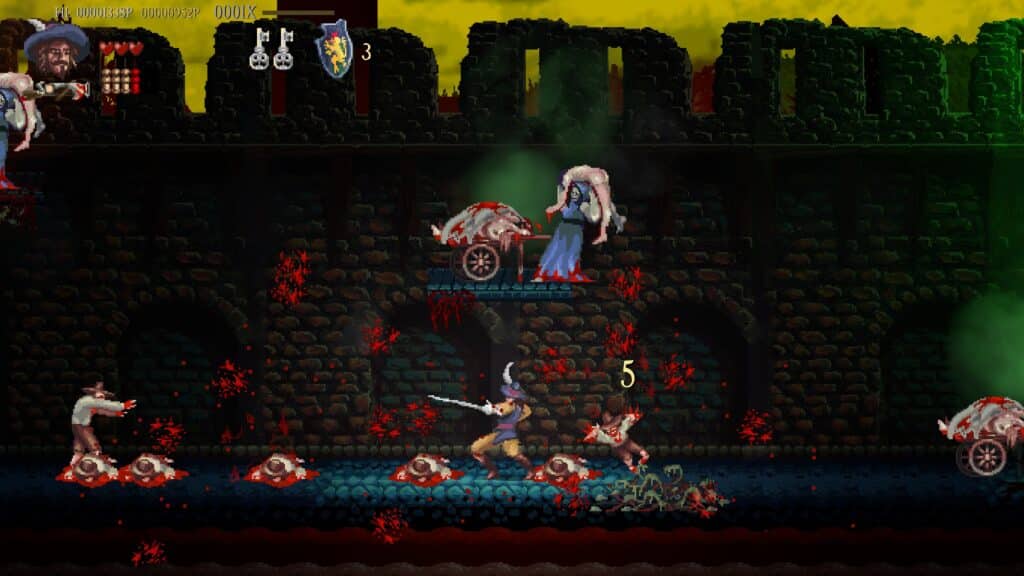
That enemy in-fighting does wonders to make this world feel chaotic and alive. Take two lowly zombies, for example. If you are caught in between them, double-jump and watch as they gleefully tear each other apart. Combat encounters start becoming akin to a puzzle you must solve with how deadly enemy placement gets and their pixel-perfect accuracy. Your own gun packs quite a punch and can typically take care of other ranged foes in a single shot. It is an amazing feat that your Musketeer can reload in a few seconds, but in this title, that spells certain death more often than not. You can not interrupt a reload animation or move in the slightest until it is done. The musket can be deadly once you get the hang of it, yet starting off, it would be wise to treat it like a utility and not reload mid-combat.
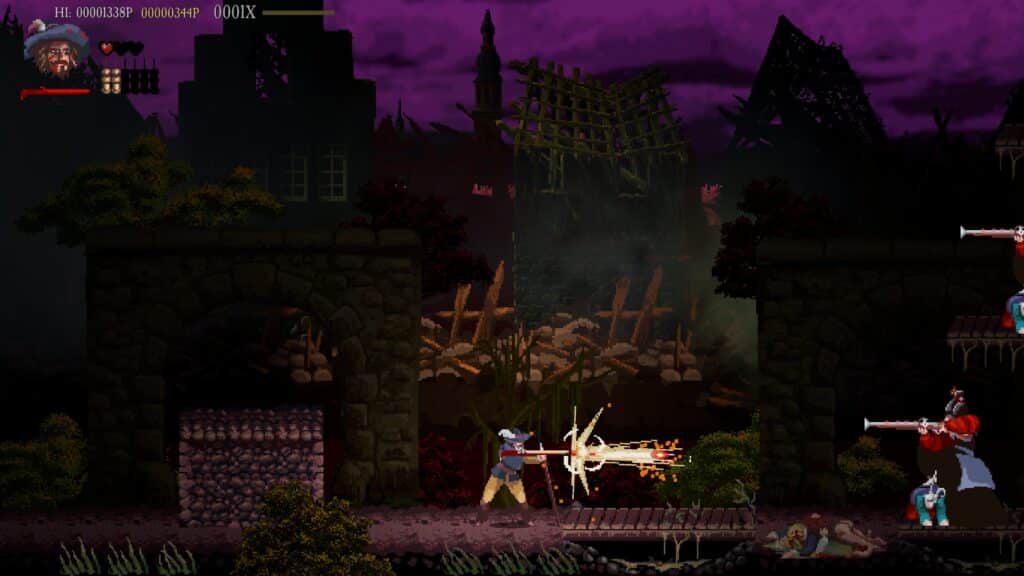
Another aspect of the gun is that any enemy killed with it will not leave behind a corpse. Shooting dead bodies can destroy them as well. I bring this up because we are stalked by the Moon God’s decapitated head through our travels. It can show up and revive already slain enemies. Destroying a body with your musket ensures that enemies in troublesome spots don’t return. Ammo isn’t all too rare, but it is not something we can waste, so it often becomes a risk/reward situation. Sure, you can save ammo if you rush forward. However, you lose it all if you die. This feature is less intimidating than it sounds. Heidelberg 1693 is very linear, with only a few locations requiring minor key-hunting to unlock a door. There are also a fair bit of checkpoints littered about, and you have unlimited lives. This is a difficult title, yet forgiving at the same time.
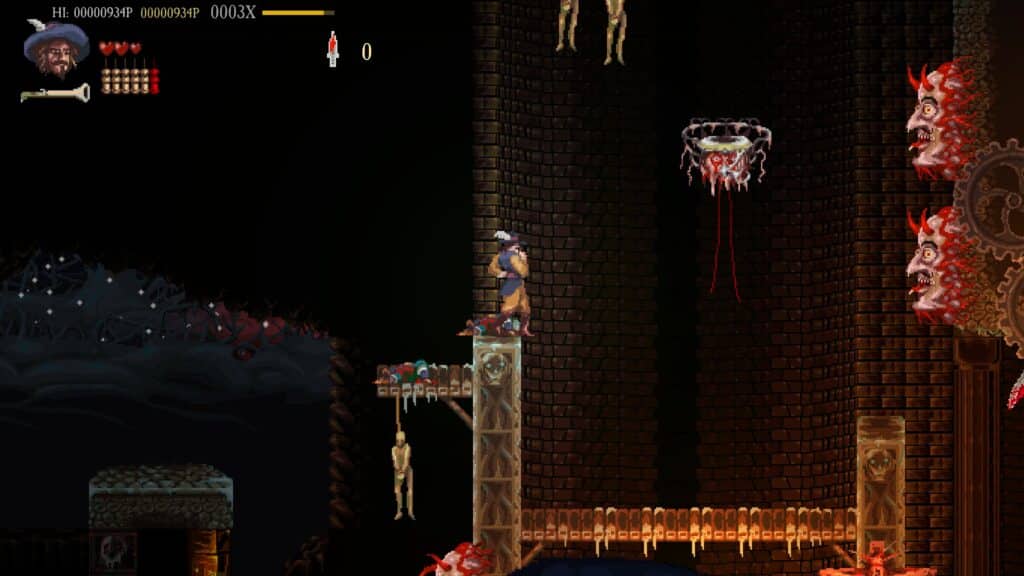
Respawning at a checkpoint is a bit odd. Your character only starts with one heart out of his overall three. The thing is, there is always more health you can get right next to them, so why even have that dead air instead of filling it completely from the get-go? Going back to a checkpoint also illustrates this title’s insistence on not giving you any time to stay still. You will be under attack immediately upon respawning or starting a new level. That can easily get you killed if you were expecting any time to take in the new environment or come up with a plan after death. It also applies to boss fights. As soon as you come into contact with one, do not expect a cutscene or anything other than it trying to cut you down immediately. I wouldn’t call this either a negative or a positive. It is just something you must be aware of if you ever try to beat the title with a single life and not feel cheated by the suddenness of the situation.
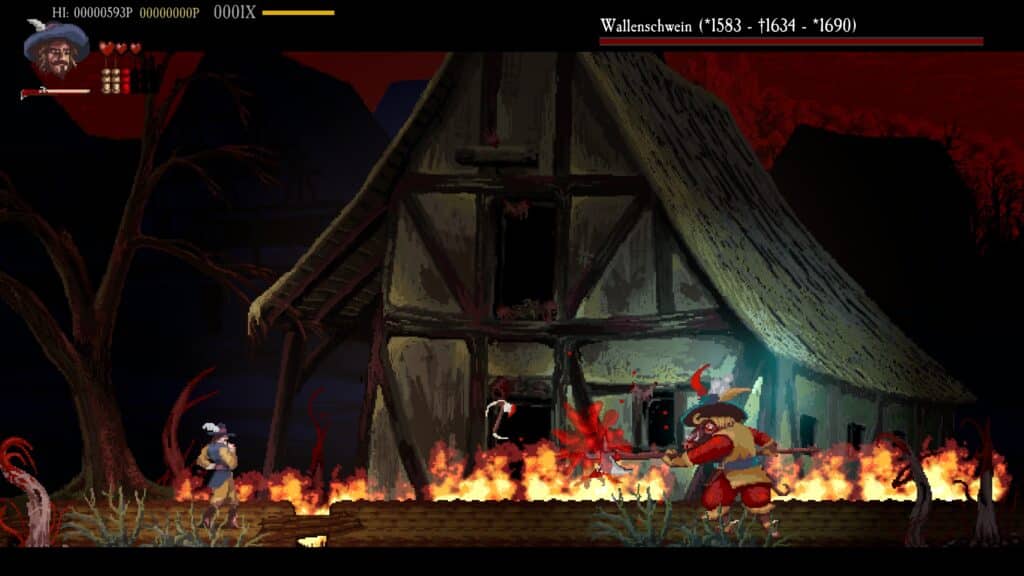
There are twenty levels overall, all of a relatively short length. As stated in the opening paragraph, you must fight tooth and nail for every inch of progress, so the playtime is amplified. In addition to your two default weapons, you may sometimes come across a sub-weapon and a new type of firearm. The sub-weapons range from thrown axes to multiple kinds of balloon-type explosives and other situational things. I rarely found them helpful, and even if they are, you best hope you don’t accidentally pick up a new one that erases the one you had. Far more useful are the other firearms, be it the scattershot musket or a demonic rifle. These can change the tide of any battle, whether it be against regular enemies or a boss itself. On the same topic of things you may discover, there are a couple of damsels that need rescuing. It is optional, but doing so gets you a new health container, taking your overall health from three to four and so on. If you die, you’ll lose the sub-weapon, new firearms, and damsel bonuses.
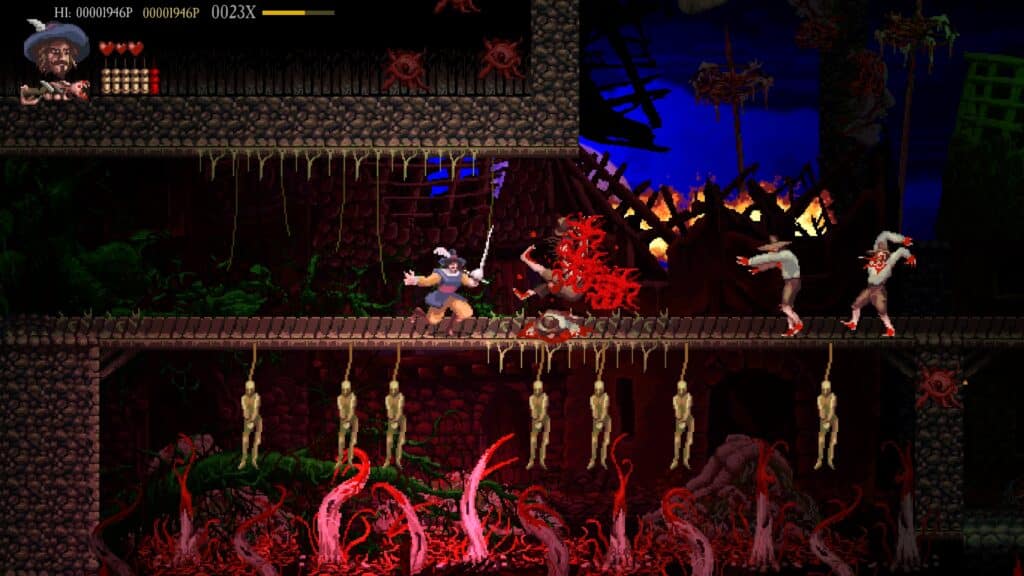
Heidelberg 1693 can get pretty cheap at times when death feels out of your control, or you are blind-sighted. The chief culprit is that floating Moon King head constantly stalking you. It is never clear when it will teleport to a location. In theory, a faint outline should indicate where it is about to warp to, but I found that around 80% of the time, it never does. These fake-outs make it a pain in the rear when you walk past the outline rather than wait again, and it does show up. Worse still is that it takes friendly fire from its minions, constantly making it retaliate by summoning projectiles or spawning circular blades around itself. The latter, in particular, can really screw you over as it teleports much quicker while in that state, and you may not even be aware it took damage from something. This results in it possibly murdering you out of the blue or just hanging around impeding your path while you are swarmed by other foes. I was fine with it at first, but with the levels getting progressively more constrained, it became a nuisance.
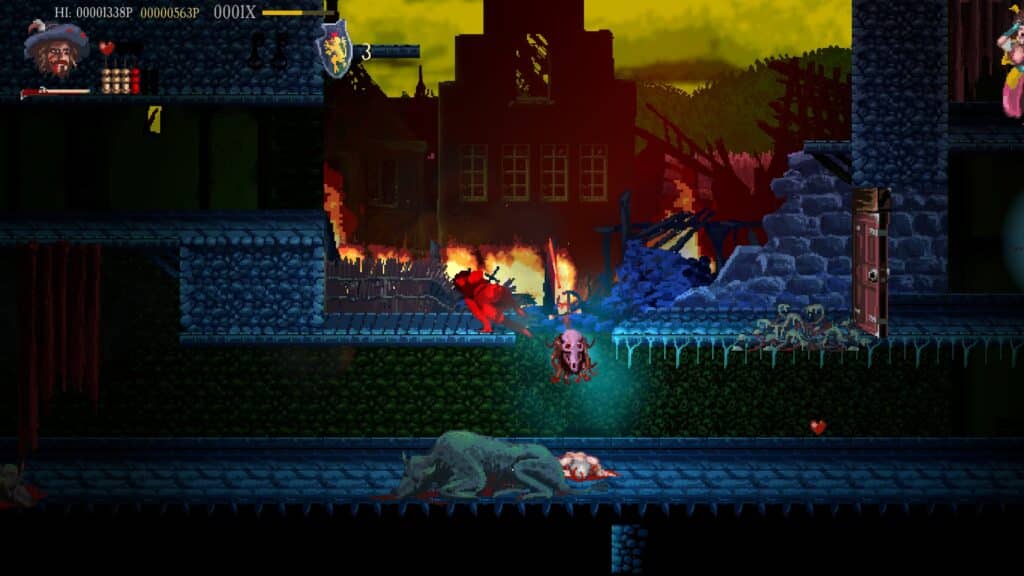
Possibly more important than your gun or swinging your sword is your ability to thrust downward after jumping. It does more damage than either attack and doesn’t lock you down in an animation. With how fast you can go from full health to dead, mobility is king. You really have to embrace the push-forward mentality this title tries to instill into the player rather than taking things slowly. As tight as the controls are, it definitely could have used more fluid movement or a few more abilities, like being able to slide. You can crouch, but it is pretty finicky if you jump beforehand. That is due to our character standing up briefly and then returning to his crouch pose after jumping. It’s a perfect way to get yourself killed. With how big our hitbox is, the lack of mobility options, and the number of projectiles at any one time, some deaths did feel unearned.
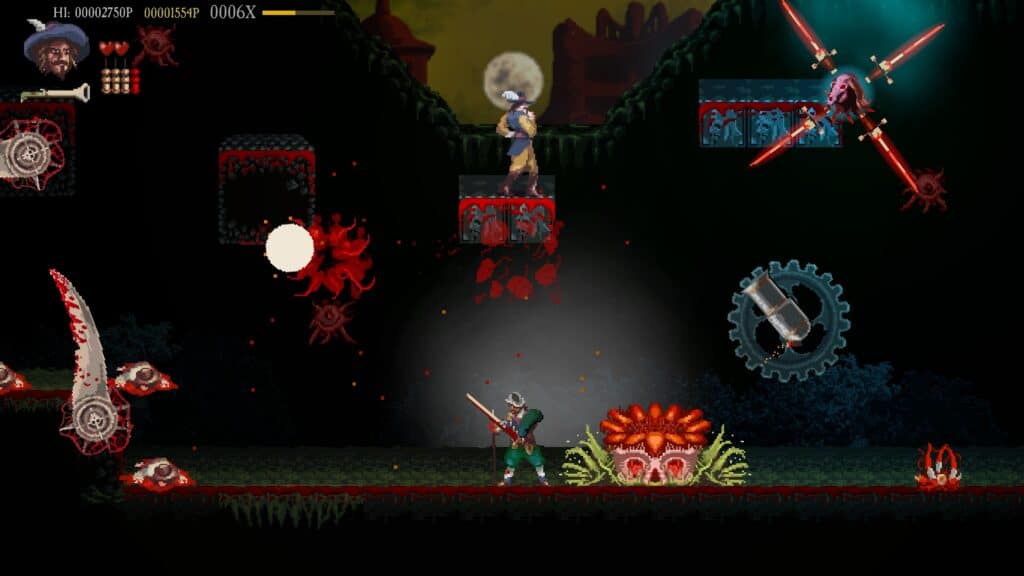
A feature that I really loved and don’t think I’ve seen before is allowing the player to see where the enemy spawn points are. Most enemies are already placed throughout, and being able to see where more can appear out of thin air leads to added depth. This can lead to you trying to jump over the spawn point, which appears as a circular blue mist, or attempting to take a different route when seeing one. It makes us really weigh our options instead of suddenly surprising us. Maybe you are being peppered by ranged enemies and choose to activate them yourself to get some foes to hide behind. Or it could be that you are forcibly being pushed back by an onslaught of assailants, accidentally activate it, and observe as the chaos unfolds. It adds a surprising amount of emergent gameplay to a linear 2D title.
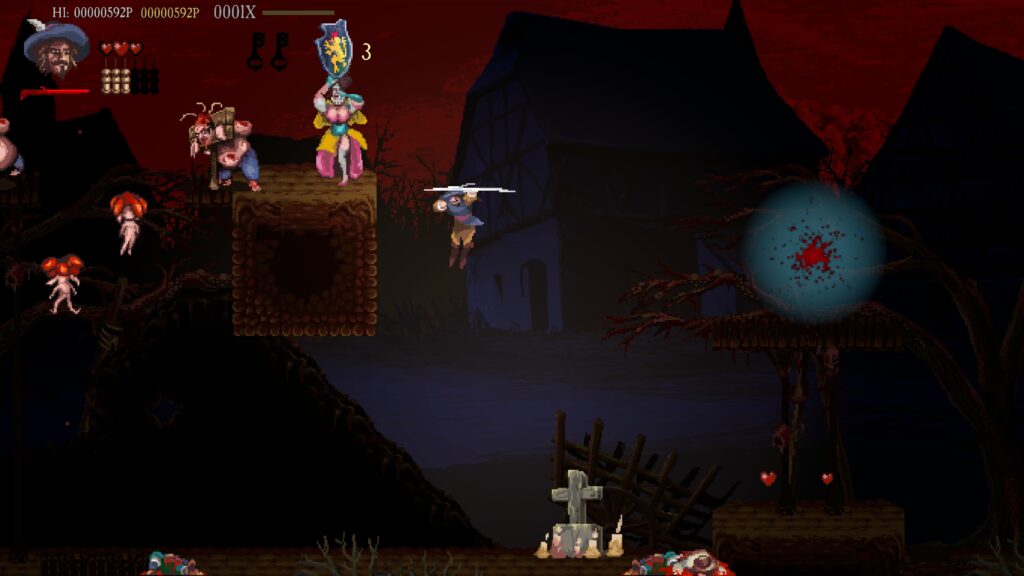
When it comes to the story, it is a tad of a weak point here. A decent amount of text is told after most stages, yet little is compelling or engaging about it. You’ll be here for the gameplay and visuals. This brings me to the music. It is a mixed bag. Much of it has an 80s Pop feel that heavily contrasts the gruesome scenery, which in my opinion, feels too out of place. You’ll go from the cutscene with a horror ambiance and then boot up a level to be greeted by Dance music. Note that I said mixed bag, not bad. It just gave me slight whiplash but isn’t what I would call a notable negative, and tastes do vary.
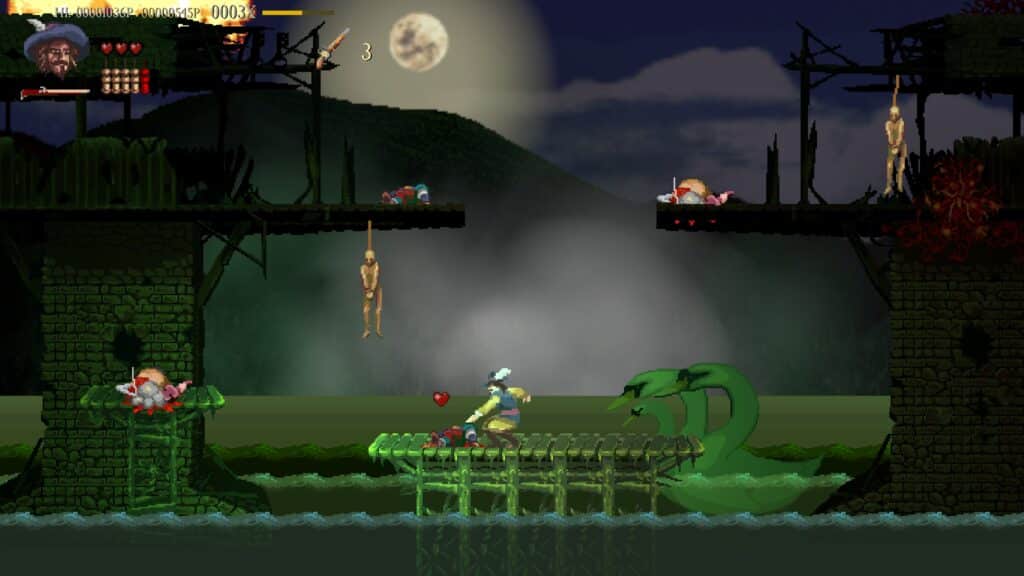
In total, it took me under three hours to complete Heidelberg 1693 and had over one hundred deaths. Conquering the campaign for the first time unlocks a Hard Mode and a Gallery containing development concept art. The differentiating factor of playing on hard is that enemies all revive after a second and a half. It forces one to be far more fast-paced than ever before and is a decent enough incentive to keep playing. This title has yet to see an update since near its release in 2021, but I hope that they one day add a way to limit framerate. As is, it will push your hardware to the limit rendering more frames than your monitor can display for no reason. There are ways to lock it to 60fps or other variants yourself, though an in-game solution would be ideal. I’ve experienced no other technical issues, and minus the clunky main menu, it played perfectly on a controller. When all is said and done, Heidelberg 1693 has flaws, yet it is a unique game that is quite unlike any other. From the setting, its focus on enemy in-fighting, and the gorgeous sprite work depicting a hellish Renaissance-era world, you won’t find something else like this on the market. It is well worth experiencing for those with a penchant for challenging yet fulfilling titles.
- El Panadero -The Baker- Review - August 27, 2024
- Awakened Evil Review - July 10, 2024
- Let’s Look At: Anima Flux - July 3, 2024